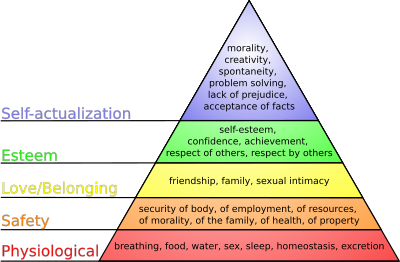





Takashi Murakami has gained mass popularity with his trademark Superflat style and colorful pantheon of cute icons including smiling flowers, jellyfish eyes, and Mr. DOB. Similar to Andy Warhol, Murakami melds consumer culture and fine art with the help of a factory of assistants. "©Murakami" innovatively brings the two worlds of consumer culture and fine art together by housing a Louis Vuitton boutique (with Murakami-designed bags ready for purchase) inside the museum. Art for art's sake is over. This is art for art's sale.
Go here to see various works by Murakami in a sort of catalogue.
An article by Swindle Magazine.
"I always emphasize that the power of the dark side exists even in cuteness and in the thoughts of peace-addicted people." - Murakami
An article on an exhibition of his work.
Murakami remixes modern Western art and traditional Japanese art, while denying the hierarchy of high "art" culture vs. low pop culture.
In his tour, Murakami points out how the skull looks like a mushroom cloud. He has made death cute and non-threatening by inserting his smiling flowers in the eye sockets. "Smiling is sometimes a hard job," says Murakami while standing next to the very cheery Kawaii!Vacances d'été.
See Murakami's tour here. (Recommended.)
While in New York we stumbled upon an exhibition of Murakami's in Brooklyn and felt a deep revulsion. Here is a stumbling of the Internet's puking.
(Try, for one, to understand that the smiling flowers -- the first image above -- covered a room, all four walls, and contained flower ball sculptures inside. That people really love this.)
(To be more descriptive, you started on the first floor of the exhibit which featured otaku supersmooth, (pre-)pubescent cyberborg bodied 'beings'; the overall feeling one of twirling semen or super smiles or Louis Vuitton -- at the end of the first floor portion. You then went to the stairs, where things started to decay. Skulls, mushrooms, puking creatures. Still smooth and still cute, still with flowers garlanding the worlds -- eg., flowers ringing in the eyes of the mushroom skull clouds -- see pink backgrounded image above. Occasional traditional Japanese style mixed into this. Shinto scroll presented to the huge creature puking about to die and never loving until this last possible moment -- is he on the wrong floor? Such is rebirth now. Rebirth in the pocket. And yet, here it is.)
("free smile with every meal", and what's a man? a woman? they say to watch your breath, and we would have it hypostatized. Murakami, do you paint the world with childish glee?)
In 2008, Takashi Murakami made Time magazine's 100 Most Influential People list, and was the only visual artist to do so.
I've read somewhere that whereas Andy Warhol took consumer goods, 'low' pop culture and made it 'high' art, Takashi Murakami takes consumer goods, 'low' pop culture, and makes them...'high' art? 'low' art? consumer goods?...
I recommend these videos, in this order:
One
Two
Three
Four














